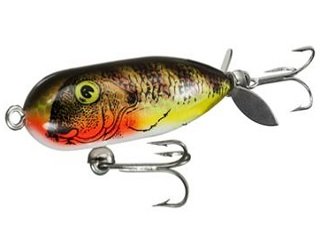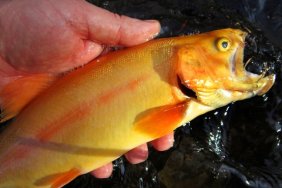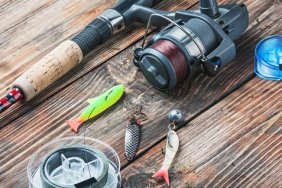 When it comes to topwater baits, one company every angler should familiarize themselves with is Heddon. From Hula poppers to Jitterbugs, Heddon has continued to crank out quality, fish-enticing topwater lures for years, and today we’ll take a closer look at one such lure: the torpedo. Keep reading to learn more about this water-churning, strike-attracting gem.
When it comes to topwater baits, one company every angler should familiarize themselves with is Heddon. From Hula poppers to Jitterbugs, Heddon has continued to crank out quality, fish-enticing topwater lures for years, and today we’ll take a closer look at one such lure: the torpedo. Keep reading to learn more about this water-churning, strike-attracting gem.
Like other topwater baits, torpedoes are long, bullet-shaped floating plastics that are typically painted to imitate baitfish (baby bass, crawfish, perch, and frog) or other prey items. Some models are even slightly molded to better mimic prey. This bullet-like design allows them to be casted a mile, and also creates a smoother, more true, retrieve.
Speaking of retrieve, this is where the torpedo can really work its magic. In true topwater form, torpedoes make a racket on the surface, and they accomplish this with the help of a propeller blade fixed at their rear. During the retrieve, this blade kicks up water and creates a noisy disturbance that schooling or aggressive fish can’t resist. What’s really cool is that the lure is so versatile that it can be fished fast, slow, or with a pattern, with equal effectiveness. I personally like to reel in slack line, jerk the rod downward to pull the lure through the water a bit, and then let it sit before repeating the action. This technique has produced explosive strikes for me time and time again. However, you might have to experiment with different retrieves to find what the fish want on a given day.
Heddon’s torpedo is also equipped with two sharp treble hooks—one beneath the belly and one at the rear, just below the propeller—that make sure you don’t lost any fish on nibbles or rolls. Lastly, the torpedo is available in three sizes—1 ½ in 1/8 oz, 1 7/8 in ¼ oz, and 2 ½ in 3/8 oz—which allows you to choose the best size for the situation.
Anyone who’s used a Heddon topwater bait can tell you how effective they can be on the water. The torpedo is no exception. Deadly during the day and downright unfair at night, any bass angler should have a few of these little beauties in the tackle box each season.








